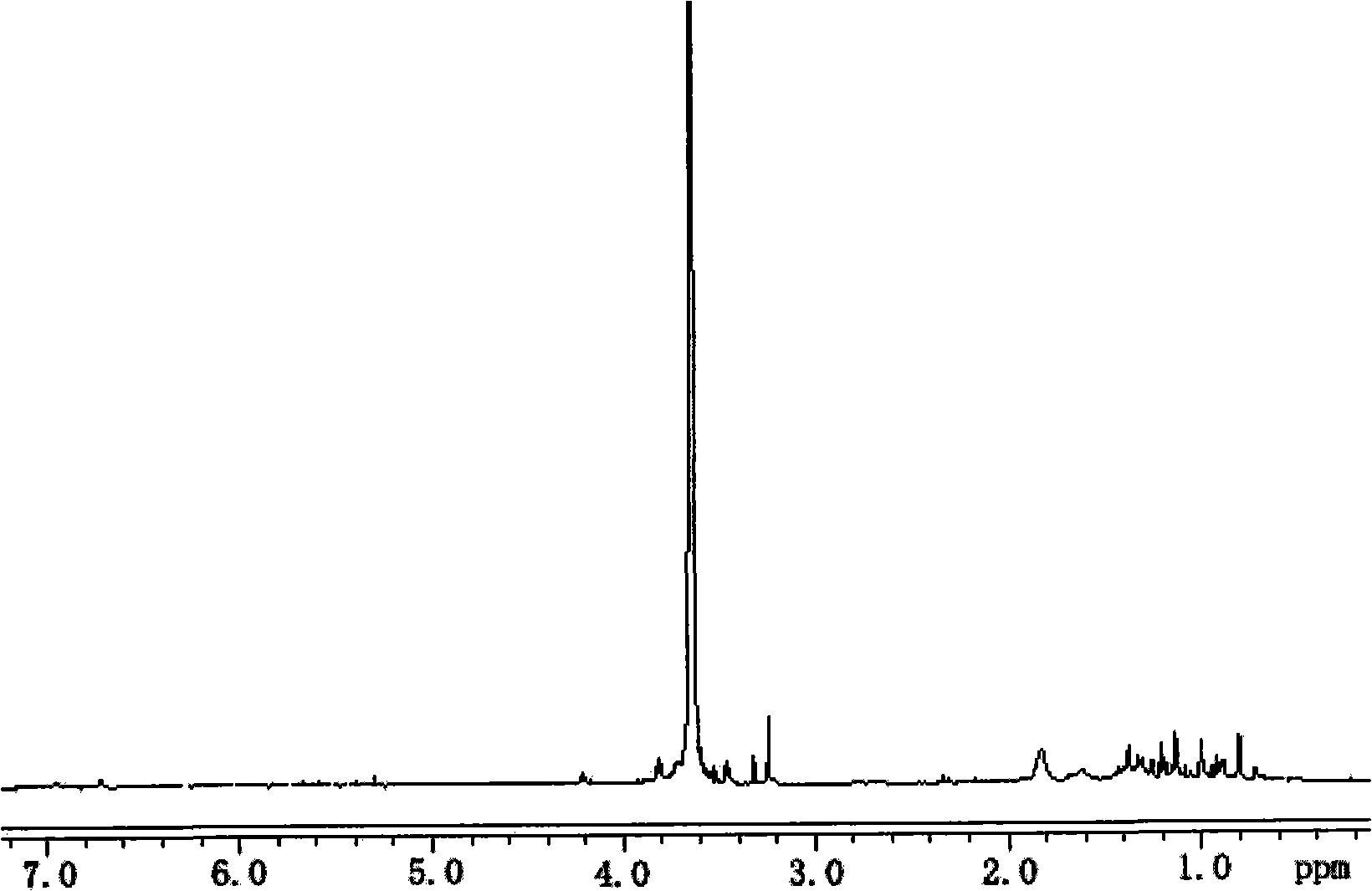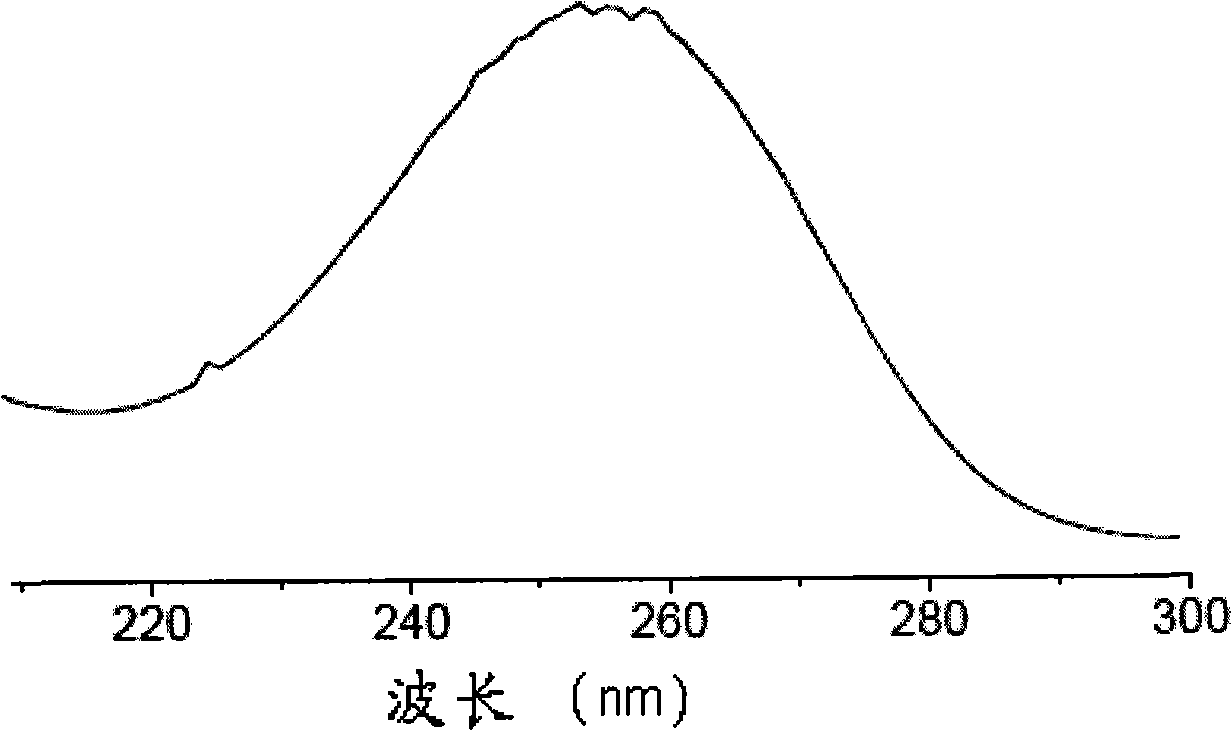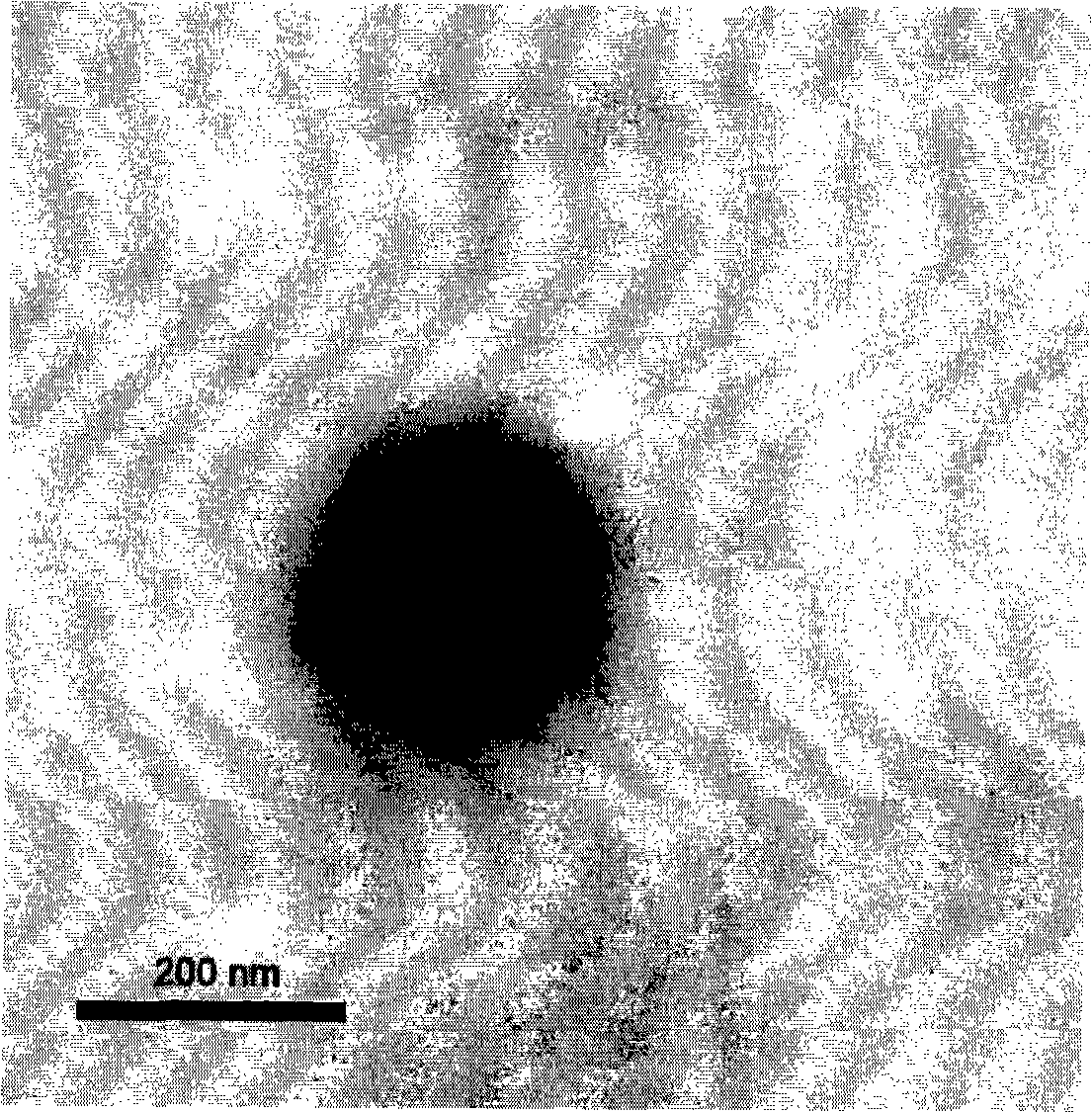Biogastrone acid-polyethyleneglycol /chitosan liver target composite drug administration system and preparation thereof
A technology of glycyrrhetic acid and polyethylene glycol, applied in the biological and medical fields, can solve the problems of complex preparation conditions and low degree of substitution, and achieve the effects of good biocompatibility, high content and avoiding chemical synthesis steps.
- Summary
- Abstract
- Description
- Claims
- Application Information
AI Technical Summary
Problems solved by technology
Method used
Image
Examples
Embodiment 1
[0062] Embodiment 1: the preparation of glycyrrhetinic acid-polyethylene glycol
[0063] 1.1 Preparation of Glycyrrhetinic Acid-Polyethylene Glycol by Glycyrrhetinic Acid Carboxyl Coupling Amino Polyethylene Glycol
[0064] Glycyrrhetinic acid (1.0mmol), aminopolyethylene glycol (0.1mmol) were dissolved in dichloromethane, dicyclohexylcarbodiimide (1.2mmol) and catalytic amount of 4-nitrogen, nitrogen- Dimethylaminopyridine, continue to react for 0.5 to 1 hour, raise the temperature and reflux for 24 hours, filter, concentrate the filtrate and precipitate it with ether, collect the solid, and dry it under vacuum at room temperature to obtain glycyrrhetinic acid, a carboxyl-coupled polyethylene glycol liver-targeting compound -Polyethylene glycol, the product is marked as: GA-PEG.
[0065] 1.2 Preparation of glycyrrhetinic acid-polyethylene glycol by coupling amino-polyethylene glycol with hydroxyl group of glycyrrhetinic acid
[0066] Glycyrrhetinic acid (31.9mmol) was disso...
Embodiment 2
[0070] Embodiment 2: the preparation of chitosan derivative
[0071] 2.1 Preparation of ethylene glycol chitosan
[0072] 1.0g chitosan (molecular weight 50000, degree of deacetylation 95%), with 20.0mL, 50wt% sodium hydroxide solution at -20 ℃ for 48 hours, add 30.0mL isopropanol and chloroethanol (2:3 , v / v), overnight at 60°C, filter, dissolve the precipitate with distilled water, adjust the pH to 7 with hydrochloric acid, dialyze for 48 hours, and freeze-dry to obtain the product.
[0073] 2.2 Preparation of isopropanol chitosan
[0074] 1.0g chitosan (molecular weight 50000, degree of deacetylation 95%) was alkalized with 10.0mL, 50wt% sodium hydroxide solution at -20°C for 48 hours, after thawing, 30.0mL isopropanol was added, and alkalized at 40°C for 1 hour, then drop 30.0mL propylene oxide, stir at 50°C for 2 hours, filter, collect the precipitate, dissolve the precipitate with distilled water, adjust the pH to 7 with hydrochloric acid, dialyze for 48 hours, and fre...
Embodiment 3
[0081] Embodiment 3: Preparation of glycyrrhetinic acid-polyethylene glycol / chitosan composite nanoparticles
[0082] 3.1 Preparation of the blend
[0083] Take by weighing 8.75mg chitosan (molecular weight 50000, deacetylation degree 95%), the glycyrrhetinic acid-polyethylene glycol (GA-PEG) that 7.0mg embodiment 1 prepares is dissolved in the hydrochloric acid of 5.0mL 1%, is mixed with Chitosan (1.75mg / mL), glycyrrhetinic acid-polyethylene glycol (1.40mg / mL) blend solution.
[0084] 3.2 Preparation of ionic cross-linking agent
[0085] Weigh 2.0 mg of sodium tripolyphosphate and dissolve it in 2.0 mL of double distilled water.
[0086] 3.3 Preparation of composite nanoparticles
[0087] Take 2.0 mL of the ionic cross-linking agent prepared in Example 3.2, and slowly add it to 5.0 mL of the blend prepared in Example 3.1 under room temperature stirring (1000 r / min), adjust the speed to 450 r / min after the dropwise addition, and continue stirring After 0.5 hour, nanopartic...
PUM
| Property | Measurement | Unit |
|---|---|---|
| Particle size | aaaaa | aaaaa |
Abstract
Description
Claims
Application Information
 Login to View More
Login to View More - R&D
- Intellectual Property
- Life Sciences
- Materials
- Tech Scout
- Unparalleled Data Quality
- Higher Quality Content
- 60% Fewer Hallucinations
Browse by: Latest US Patents, China's latest patents, Technical Efficacy Thesaurus, Application Domain, Technology Topic, Popular Technical Reports.
© 2025 PatSnap. All rights reserved.Legal|Privacy policy|Modern Slavery Act Transparency Statement|Sitemap|About US| Contact US: help@patsnap.com



